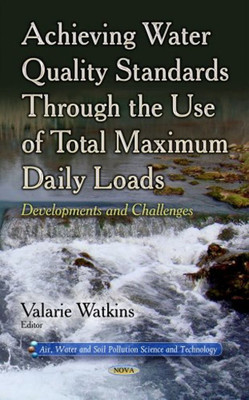Achieving Water Quality Standards Through the Use of Total Maximum Daily Loads(English, Hardcover, unknown)
Quick Overview
Product Price Comparison
The Clean Water Act (CWA) contains a number of complex and interrelated elements of overall water quality management. Foremost is the requirement in Section 303 that states establish ambient water quality standards for water bodies, consisting of the designated use or uses of a water body (eg: recreational, public water supply, or industrial water supply) and the water quality criteria which are necessary to protect the use or uses. Standards are then used to determine which waters must be cleaned up, how much effluent may be discharged, and what is needed for protection. Through permitting, states or the Environmental Protection Agency (EPA) impose wastewater discharge limits on individual industrial and municipal facilities to ensure that water quality standards are attained. However, Congress recognised in the act that, in many cases, pollution controls implemented by industry and cities would be insufficient to attain and maintain water quality standards, due to pollutant contributions from other unregulated sources. This book discusses the Clean Water Act and the pollutant total maximum daily loads, as well as the changes needed if the EPA program is to help fulfil the nation's water quality goals.


